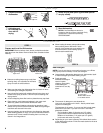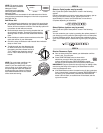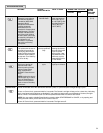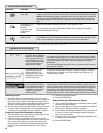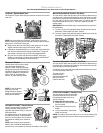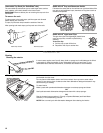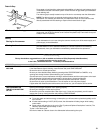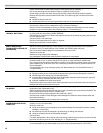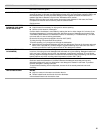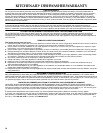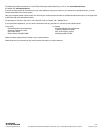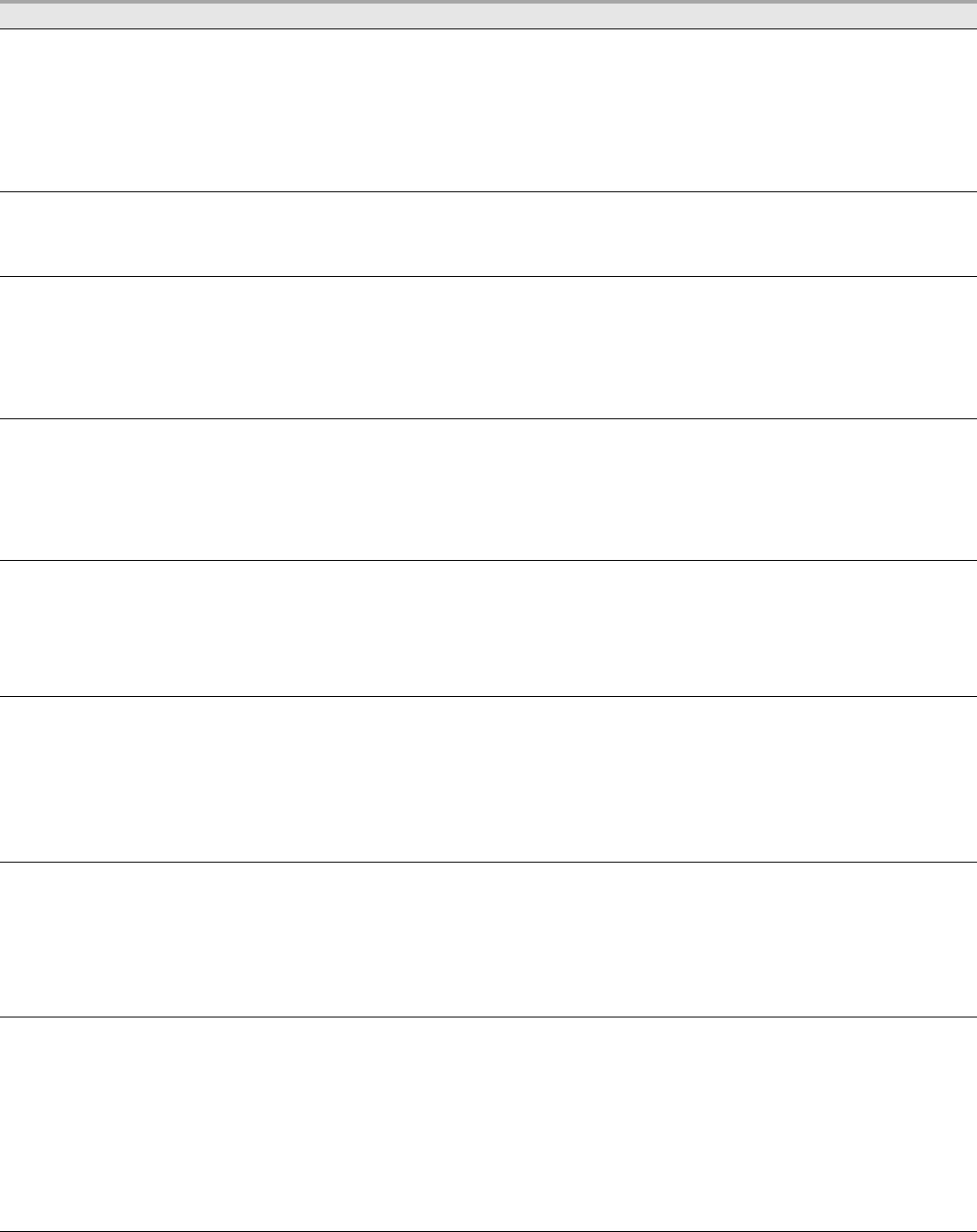
14
DISHWASHER NOT DRYING NOTE: Plastic and items with nonstick surfaces are difficult to dry because they have a porous
surface which tends to collect water droplets. Towel drying may be necessary.
Use of rinse aid along with the Heat Dry option is needed for proper drying.
Proper loading of items can affect drying. (See specific loading instructions within this guide.)
Glasses and cups with concave bottoms hold water. This water may spill onto other items when
unloading.
■ Unload the bottom rack first.
■ Locate these items on the more slanted side of the rack for improved results.
WILL NOT FILL Be sure the water is turned on to the dishwasher.
Check that the float is free from obstructions. (See “Parts and Features.”)
Check for suds in the dishwasher. If foam or suds are detected, the dishwasher may not operate
properly or may not fill with water. (See “Blinking Lights” in “Troubleshooting.”)
WATER REMAINS IN THE
TUB/WILL NOT DRAIN
Be sure the cycle has completed (the Clean light is on). If it has not, you will need to resume the cycle
by closing the door and pressing START/RESUME.
If dishwasher is connected to a food waste disposer, be sure the knockout plug has been removed
from the disposer inlet.
Check for kinks in the drain hose.
Check for food obstructions in the drain or disposer.
Check your house fuse or circuit breaker.
HARD WATER
(WHITE RESIDUE ON
DISHWASHER INTERIOR OR
GLASSWARE)
NOTE: Extremely hard water mineral deposits can cause damage to your dishwasher and make it
difficult to achieve good cleaning. A water softener is strongly recommended if your hardness is
15 grains or more. If a water softener is not installed, the following steps may help:
Use a commercial cleaner designed for dishwashers once per month.
Always use a rinse aid.
Always use a high-quality, fresh detergent.
Use a detergent booster/water softener additive designed for dishwashers.
ODORS NOTE: If the dishwasher is not used daily, you can run a rinse cycle with the partial load daily until a
full load is ready to run, or use the Top Rack Only option (on some models) for partial loads.
Run a vinegar rinse through the dishwasher by putting 2 cups (500 mL) of white vinegar in an upright
glass measuring cup in the lower rack. Run a normal cycle with the Heat Dry option turned off. Do
not use detergent.
The dishwasher may not be draining properly, see “Water Remains In The Tub/Will Not Drain” in
“Troubleshooting.”
NOISY NOTES:
■ Surging sounds can occur periodically throughout the cycle while the dishwasher is draining.
■ Normal water valve hissing may be heard periodically.
■ A normal snap sound may be heard when the detergent dispenser opens during the cycle and
when the door is opened at the end of the cycle.
■ Improper installation will affect noise levels.
A thumping sound may be heard if items extend beyond the racks and interfere with the wash arms.
Readjust the dishware and resume the cycle.
FOOD SOILS REMAIN
ON DISHES
Be sure the dishwasher is loaded correctly. Improper loading can greatly decrease the washing
performance (see “Dishwasher Use”).
Select the proper cycle and option for the type of soils. The Heavy Duty cycle with the ProScrub
®
(on
some models) option can be used for tougher loads.
Be sure the incoming water temperature is at least 120°F (49°C).
Use the proper amount of fresh detergent. More detergent is needed for heavier-soiled loads and
hard water conditions.
Scrape food from dishes prior to loading (do not prerinse).
DISHES DIRTY/SUDS IN
DISHWASHER/CYCLE NOT
COMPLETE
If foam or suds are detected by the dishwasher sensing system, the dishwasher may not operate
properly or may not fill with water.
Suds can come from:
■ Using the incorrect type of detergent, such as dish detergent for hand washing dishes, laundry
detergent, or hand soap.
■ Not replacing the rinse aid dispenser cap after filling (or refilling) the rinse aid.
■ Using an excessive amount of dishwasher detergent.
Call for service.
If no water was present in the machine at any time during a heated wash cycle, the cycle will end and
the Clean LED will not come on. See “Will Not Fill” in “Troubleshooting.”
DID NOT SANITIZE If the sanitized light is blinking, the load is NOT sanitized. The cycle was interrupted in the final rinse,
or the temperature for your water heater is set too low. Set your water heater to 120°F (49°C).
PROBLEM SOLUTION



